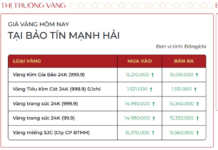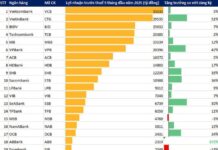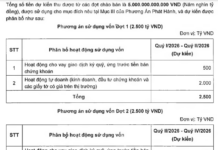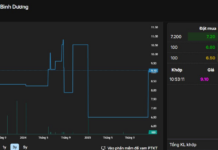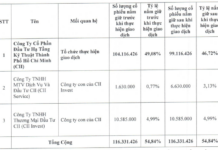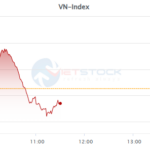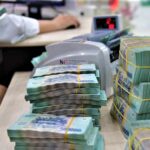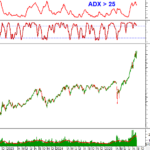In the past month, USD rates in the domestic market have fluctuated significantly, causing concerns about potential impacts on production and business operations towards the end of the year.
Significant pressure on businesses
Statistics show that in August, the USD exchange rate at Vietcombank increased by up to 142 VND in buying and 122 VND in selling compared to the end of July. Meanwhile, at BIDV, the respective increases were 176 VND and 135 VND. In the free market, the fluctuation was even more evident, with the USD rate surging by approximately 140 VND to settle at 26,650-26,720 VND per USD. Since the beginning of the year, both the central exchange rate and the commercial exchange rate have risen by about 3.68%, a notable increase compared to the previous period.
According to enterprises (DN), the exchange rate volatility has promptly affected production and business activities, especially for those importing raw materials in preparation for the year-end peak season. Mr. Vo Thanh Loc, Commercial Director of Farmers Market supermarket system (Ho Chi Minh City), shared that he has been anxious lately, witnessing the “hot” exchange rate right before the peak season for importing goods for the Lunar New Year. However, he affirmed that the enterprise would maintain the planned import volume. When the goods arrive at the port, the final retail price will be calculated by the enterprise based on actual costs and the market situation. “The thing is, the Lunar New Year market is highly competitive; we cannot raise prices immediately when import costs increase due to exchange rate fluctuations. Instead, we have to consider the market price level and consumer purchasing power,” said Mr. Loc.
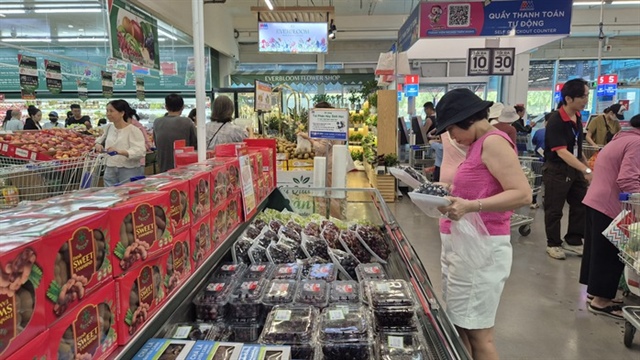
Imported goods section at MM Mega Market An Phu supermarket, Ho Chi Minh City. Photo: AN AN |
Mr. Loc also emphasized that in the retail industry, finding good sources of goods with production advantages and competitive pricing is the key to successful consumption, while the exchange rate is just one part of the overall equation.
Mr. Bach Khanh Nhut, Vice Chairman of the Vietnam Cashew Association (Vinacas), said that the cashew industry imports raw materials and exports cashew nuts, so it might seem balanced when the exchange rate fluctuates. However, in reality, most enterprises do not have ready USD and have to purchase foreign currency in the free market for imports and debt repayment. With the current exchange rate, import costs have surged far beyond expectations, causing difficulties for cashew enterprises. “While cashew exports are stagnant, many enterprises cannot sell their products as the US and European markets are almost frozen. Customers are only buying cautiously, monitoring the global economic situation, and not expanding order signings,” said Mr. Nhut.
According to Mr. Nhut, enterprises are currently relying mainly on the Chinese market for the Mid-Autumn Festival, while anxiously awaiting October, which is expected to be more vibrant as it marks the beginning of the year-end shopping season. “Not only the cashew industry but also other industries are hoping for exchange rate stability to facilitate easier calculations. At present, business equations revolve around balancing capital costs and selling prices, making it challenging to devise long-term plans,” Mr. Nhut shared.
Proactive intervention strategy
Notably, the USD exchange rate in Vietnam has been climbing steadily despite the greenback’s cooling trend in the international market. If we consider the beginning of the year, the USD index (DXY) has dropped by about 11%, but in Vietnam, this currency has appreciated against the VND. Experts attribute this divergence partly to the increased demand for foreign currency by enterprises for importing goods as global trade undergoes various fluctuations.
On September 1, 2025, PGS-TS Nguyen Huu Huan from the University of Economics Ho Chi Minh City (UEH) shared his assessment with the NLD newspaper. He stated that the State Bank of Vietnam (SBV) is maintaining a loose monetary policy to keep interest rates low and support economic growth. “In this context, the USD/VND exchange rate is likely to face upward pressure and may continue to fluctuate until the end of the year. It is crucial for enterprises to make careful calculations and avoid immediately raising selling prices when import costs increase due to exchange rate fluctuations. Instead, they can utilize appropriate financial risk management tools to mitigate negative impacts,” advised Mr. Huan.
From another perspective, Mr. Vu Minh Duc, Commercial Representative of the Raisin Administrative Committee of California (USA) in Vietnam, pointed out the need to view the exchange rate in relation to other major currencies. “Indeed, the USD has strengthened against the VND, but in many other markets, the USD has weakened against the euro and the British pound. Therefore, Vietnamese enterprises importing goods in USD still have an advantage compared to transacting in other currencies,” analyzed Mr. Duc.
However, in the past week, the USD/VND exchange rate has shown signs of cooling down, which is considered a positive signal indicating that the pressure on the exchange rate may ease in the final quarter of 2025. Mr. Nguyen Thanh Lam, Director of Individual Customer Analysis at Maybank Securities Company, noted that there was a time when the market exchange rate surpassed the 26,500 VND per USD mark. Immediately, the SBV demonstrated its proactive approach to stabilizing the market through timely solutions, such as announcing the sale of USD through a cancellable 180-day forward contract at 26,550 VND per USD, slightly higher than the market rate at that time (26,512 VND per USD). “This intervention was limited to banks with a negative foreign exchange position, with an allocation just sufficient to balance the position. As a result, it helped ease short-term pressure on the exchange rate while preserving foreign exchange reserves. This proactive strategy effectively stabilized the market sentiment, curbed speculation, and provided Vietnam with flexibility to cope with global volatility,” emphasized Mr. Lam.
From another perspective, experts from MBS Securities Company pointed out that despite the expected USD decline towards the end of the year as the US Federal Reserve (Fed) may start cutting interest rates, there are still internal pressures on the exchange rate. One reason is the surge in demand for imports from the US as the 0% tax rate comes into effect, while exports may slow down, narrowing the trade surplus. Additionally, the gap between domestic and international gold prices continues to widen as international gold prices rise, indirectly stimulating the demand for foreign currency in the free market for illegal gold imports.
|
Credit growth is expected to accelerate Mr. Dinh Duc Quang, Director of Currency Business Division at UOB Vietnam, shared that, in the short term, the SBV has not made any moves to adjust the VND policy interest rate. However, if the Fed cuts interest rates in September and the USD interest rate decline becomes more apparent from late 2025 to early 2026, the SBV may reduce the VND interest rate by about 0.5 percentage points. In that scenario, the USD is projected to cool down to around 26,000 VND per USD by the end of the year, implying a mere 2%-3% increase in the exchange rate for the whole year. According to Mr. Quang, deposit and lending rates are unlikely to drop significantly due to capital pressure, but credit growth can accelerate, with an annual increase of 18%-20%. This will be a crucial boost for enterprises to access capital and contribute to economic growth in the last months of the year. |
THAI PHUONG – NGOC ANH
– 06:20 02/09/2025
What’s Affecting Interest Rates?
In a thriving economic landscape, with surging credit growth and intense competition for funds, banks are offering varying lending rates. Experts predict a slight upward trend in interest rates by the end of 2025, creating a diverse landscape for borrowers.
“Technical Analysis for the Session Ahead: On the Cusp of History”
The VN-Index has been on a remarkable growth trajectory, inching closer to its historical peak. With a high probability of breaching the old peak zone of 1,680-1,693 points, the index is poised for a potential breakthrough. Meanwhile, the HNX-Index has also been on an upward trend, forming a Big White Candle pattern, indicating strong buying pressure and potential for further gains.






